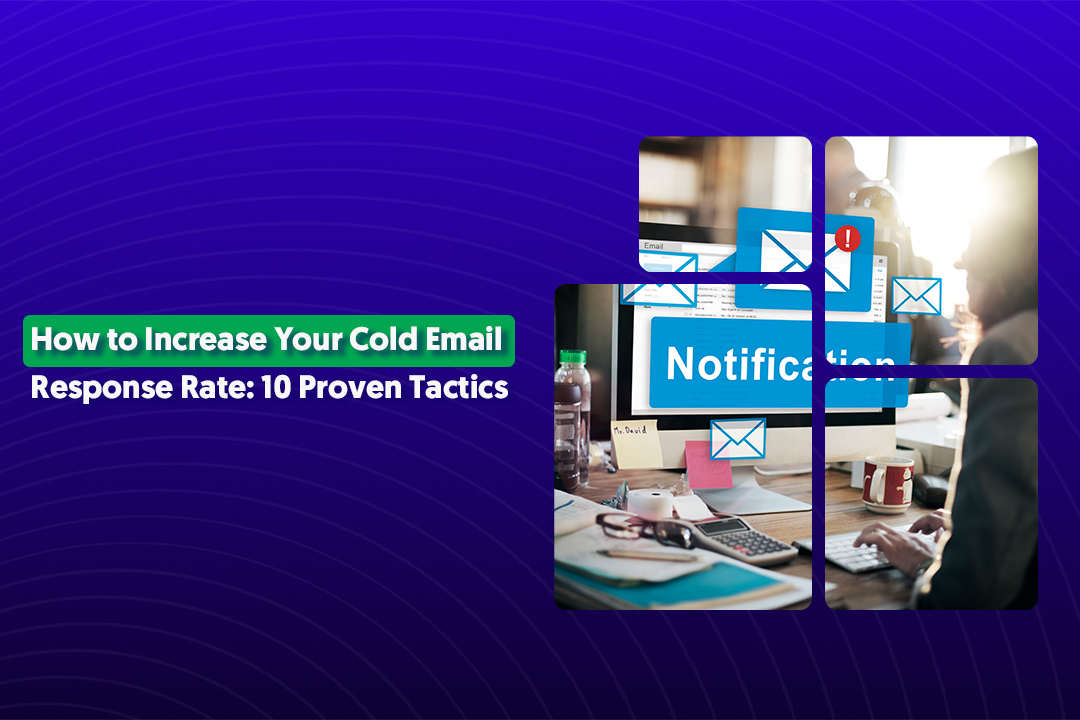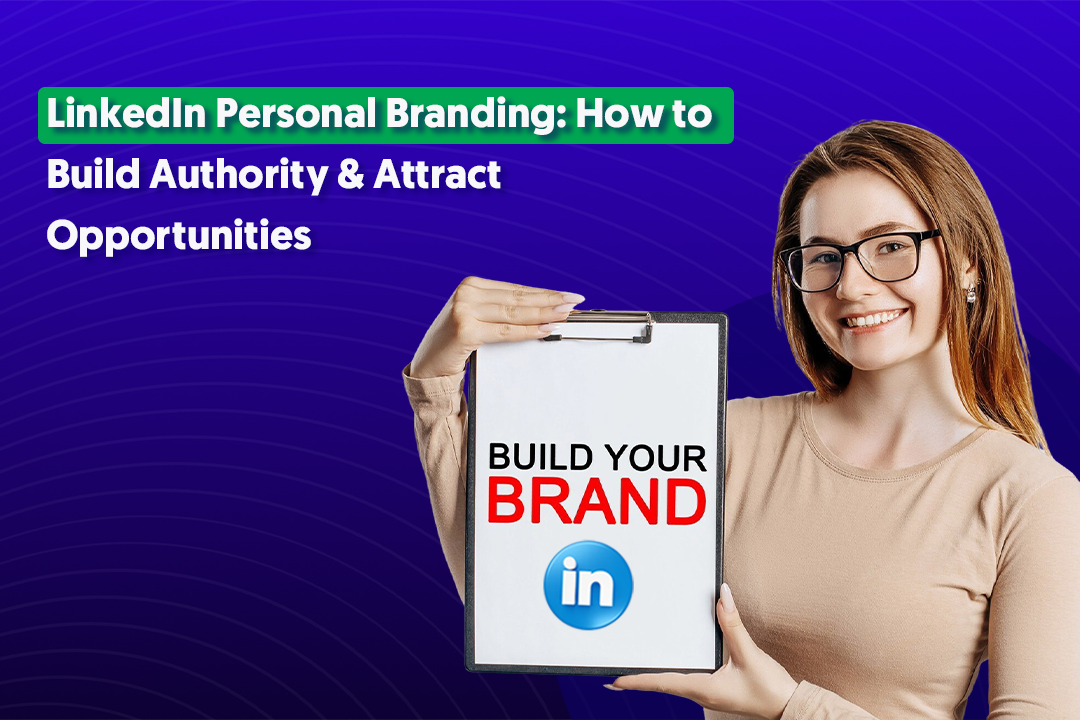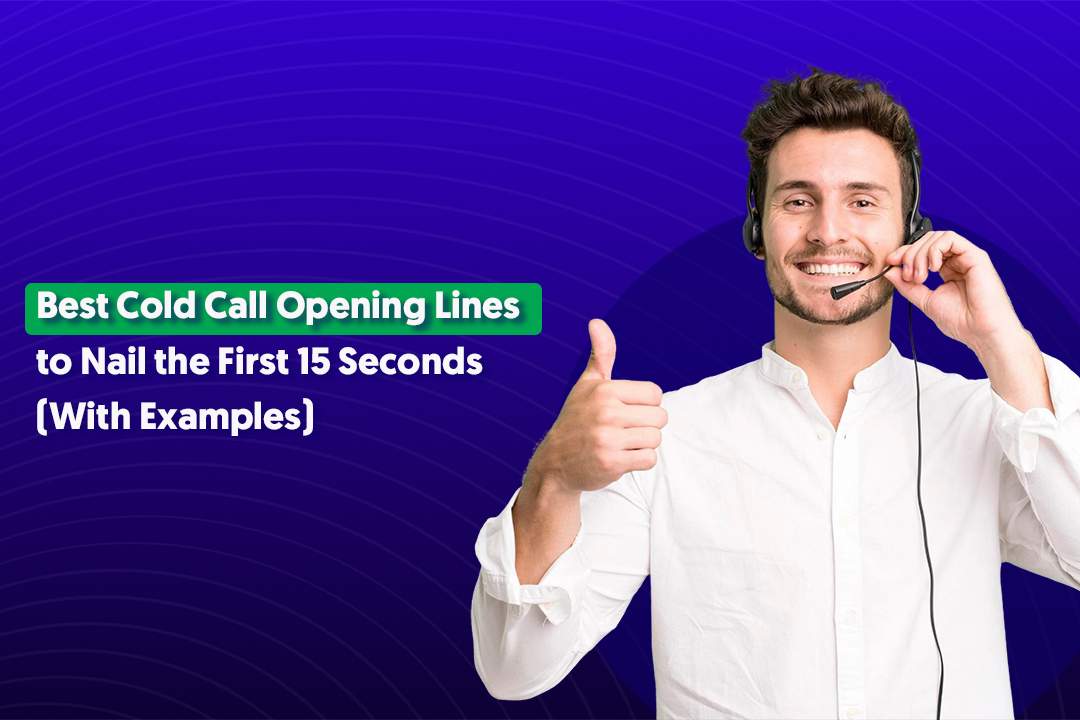Table of Content
Key Takeaways
- Understand why leads went cold before choosing your re-engagement strategy.
- Hot leads need follow-up in 2-4 weeks, warm leads in 1-3 months, cold leads in 3-6 months.
- Protect your deliverability by removing non-openers from sequences.
- Your dormant database is a goldmine. These people already know you, which makes them easier and cheaper to convert than cold prospects.
- Combine email + LinkedIn + calls for 2-3x better response rates.
- Enterprise deals and big opportunities deserve custom, human outreach. Volume plays work fine with smart automation and segmentation.
Here's something most sales teams overlook: chasing new leads when you're sitting on a goldmine of people who already showed interest in what you sell.
Someone who downloaded your guide, replied to your cold email, or attended your demo already knows who you are. They've raised their hand once. Getting them back costs way less than starting from scratch with someone who's never heard of you.
In fact, re-engaging lost leads typically costs 5-10x less than acquiring brand-new prospects, and these people convert faster because they're already familiar with your solution.
But first, let's get clear on who we're actually talking about:
- Lost lead - Someone who engaged with your outreach (opened emails, clicked links, maybe even replied) but went silent before becoming a customer. They were interested but the timing wasn't right or something got in the way.
- Inactive customer - A past client who stopped using your product or service. They've already bought from you once, so they know your value.
- Cold prospect - Someone you reached out to who never responded at all. They're the toughest group to wake up because you never had their attention in the first place.
This guide covers all three. You'll get 12 practical strategies to bring these people back, plus ready-to-use email templates, subject lines that actually get opened.
We'll also show you when it makes sense to hand this off to a lead generation agency like us at Cleverly.
Let's get into it.

Why Leads Go Cold (Diagnosis Before Action)
Before you fire off a "just checking in" email, you need to understand why you're losing leads in the first place.
Here are the most common reasons leads ghost you:
- Timing wasn't right - They were interested but not ready to buy. Maybe they're locked into an existing contract, or the project got pushed to next quarter.
- Poor follow-up - You waited too long between touchpoints, or you followed up too aggressively and annoyed them. Both kill momentum.
- Value wasn't clear - Your pitch didn't connect the dots between their problem and your solution. They didn't see the ROI.
- Friction in the process - Your demo signup had too many fields. Your pricing page was confusing. Your sales process felt like pulling teeth.
- Budget cycles - They wanted to move forward but funds weren't available. This is huge in B2B where budget planning happens quarterly or annually.
- Decision-maker changed - Your champion left the company or got moved to a different role. Now you're back to square one with someone who doesn't know you.
Quick Audit: Figure Out Where They Dropped Off
Pull up your last 20-30 lost leads and look for patterns:
- Last touchpoint - When did they stop responding? Was it after pricing? After a demo? After the proposal?
- Last content they engaged with - Did they download your ROI calculator but never book a call? That tells you something.
- Objections they raised - If they said "too expensive" or "not the right time," write it down.
- Buyer stage - Were they just browsing or close to signing? Early-stage dropoffs need different messaging than near-closes.
Why this matters: A lead who went cold because of budget needs a different re-engagement approach than someone who didn't see your value.
Treat them the same and you'll keep losing leads you could've saved. Diagnosis first, action second.
Learn More: How to Build a Winning Cross-Channel Lead Generation Strategy
12 Proven Strategies to Re-Engage Lost Leads
Here's the thing: you don't need all 12 of these. Pick 3-5 that fit your audience and situation, then combine email with at least one other channel for best results.
Let's break down what actually works.
1. Run a Short "We Miss You / Are You Still Interested?" Email Sequence
The simplest way for how to reengage a prospect via email is a quick 2-3 email sequence that doesn't overthink it:
Email 1 (Day 1): Soft check-in
- Subject line: "Did we lose you?"
- Hook: "Hey [Name], we haven't heard from you in a while. Just wanted to make sure we didn't drop the ball on our end."
Email 2 (Day 4): Value reminder
- Subject line: "Quick reminder: [specific benefit]"
- Hook: Remind them of the original problem you solve and one concrete outcome.
Email 3 (Day 7): Easy out
- Subject line: "Should I close your file?"
- Hook: "No hard feelings if the timing's not right. Reply 'not now' and I'll check back in 6 months, or let me know if you want to revisit."
This works because it's honest, low-pressure, and gives them an easy way to respond either way.

2. Offer a Time-Bound Incentive or Exclusive Deal
If you want to re-engage lost customers fast, a limited-time offer can work wonders. But here's the catch: use scarcity authentically or you'll look desperate.
What works:
- 15-20% discount for the next 10 days.
- Free premium feature for 3 months.
- Waived setup fees if they sign by [date].
When to use discounts: If the lead went cold over price or budget concerns, an incentive makes sense. It removes the barrier.
When NOT to use them: If they didn't see your value in the first place, a discount won't fix that. You'll just attract price-shoppers who churn later and tank your LTV.
Subject line example: "Exclusive offer: 20% off if you're ready this month"
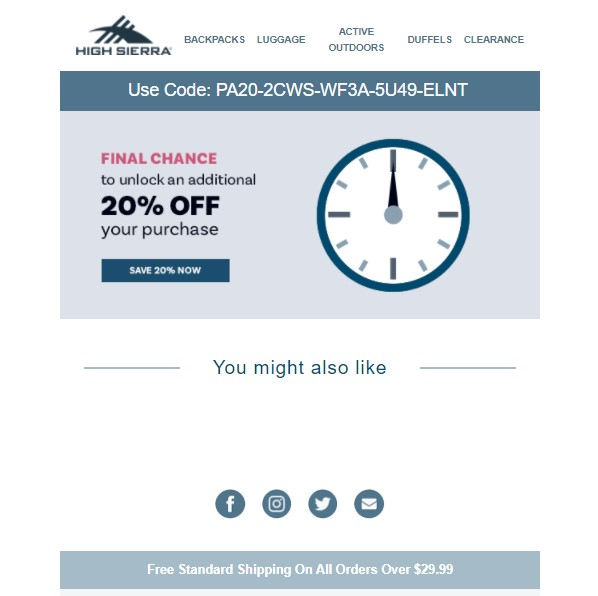
3. Send an Educational Value Play (New Use Case / Case Study)
Sometimes leads go cold because they couldn't picture how your solution fits their world. Re-engage lost leads by showing them proof it works for someone like them.
Share 1-2 short case studies with real numbers:
- "How [Company X] cut lead response time by 60% in 3 months"
- "How we helped [similar business] close 40% more deals without hiring more reps"
CTA that works: "Saw this and thought of you. We did something similar for [Company]. Want the one-pager?"
Keep it short. Nobody's reading a 10-page PDF. One outcome, one metric, one clear CTA.
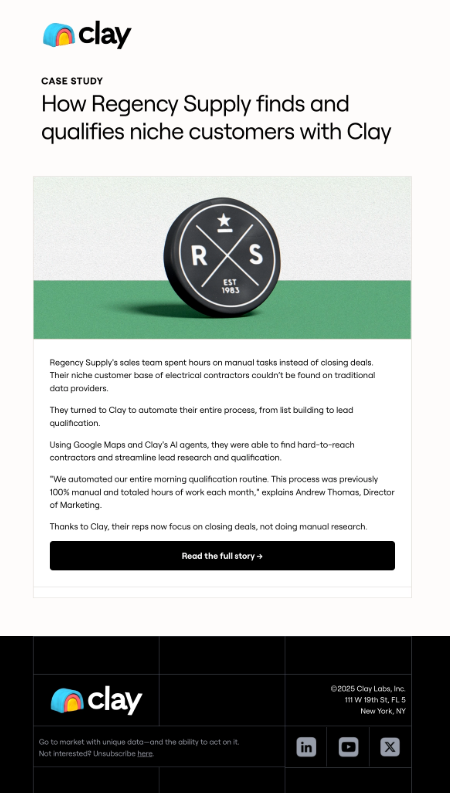
4. Ask for Feedback (Make It Easy to Respond)
Here's a sneaky-but-effective tactic for how to reengage a prospect via email: just ask them what went wrong.
Send a short message like:
- "Quick question: What stopped you from moving forward with us?"
- Or link to a 2-question survey: "What didn't work?" and "What would make you reconsider?"
Why this works: People like being asked their opinion. Even if they don't come back as a customer, you get intel on why you're losing deals. And often, just answering the question reopens the conversation.

5. Re-Engage Via Multi-Channel (LinkedIn + Email + Call)
Email alone doesn't cut it anymore. If you really want to re-engage lost leads, hit them from multiple angles:
- Day 1: Comment on their LinkedIn post with something useful (not salesy).
- Day 3: Send an email with a helpful resource or case study.
- Day 7: Friendly phone call - "Hey, sent you something last week, wanted to see if it was relevant".
Why this works: Cross-channel outreach increases visibility and builds trust. They see your name in multiple places and think "okay, this person's legit."
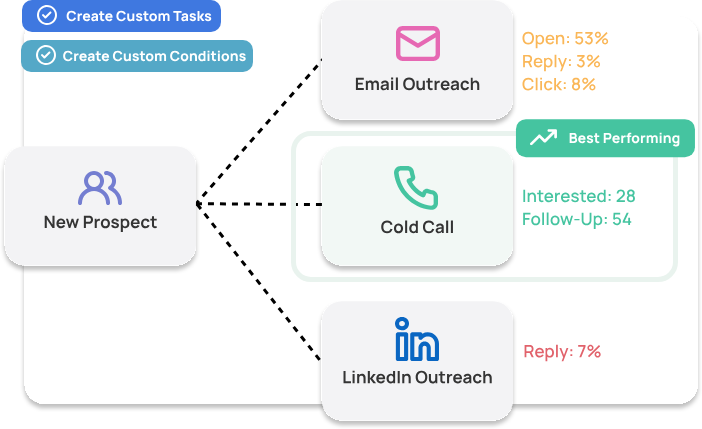
6. Use a Product Update / New Feature Announcement
Did a lead bounce because you didn't have a feature they needed? Perfect reason to re-engage lost customers.
Email template:
- Subject: "We built the thing you asked for"
- Body: "Remember when you mentioned [pain point]? We just launched [new feature] that solves exactly that. Want a 10-minute walkthrough?"
This works especially well in SaaS where you're constantly shipping updates. The lead's objection might not even exist anymore.
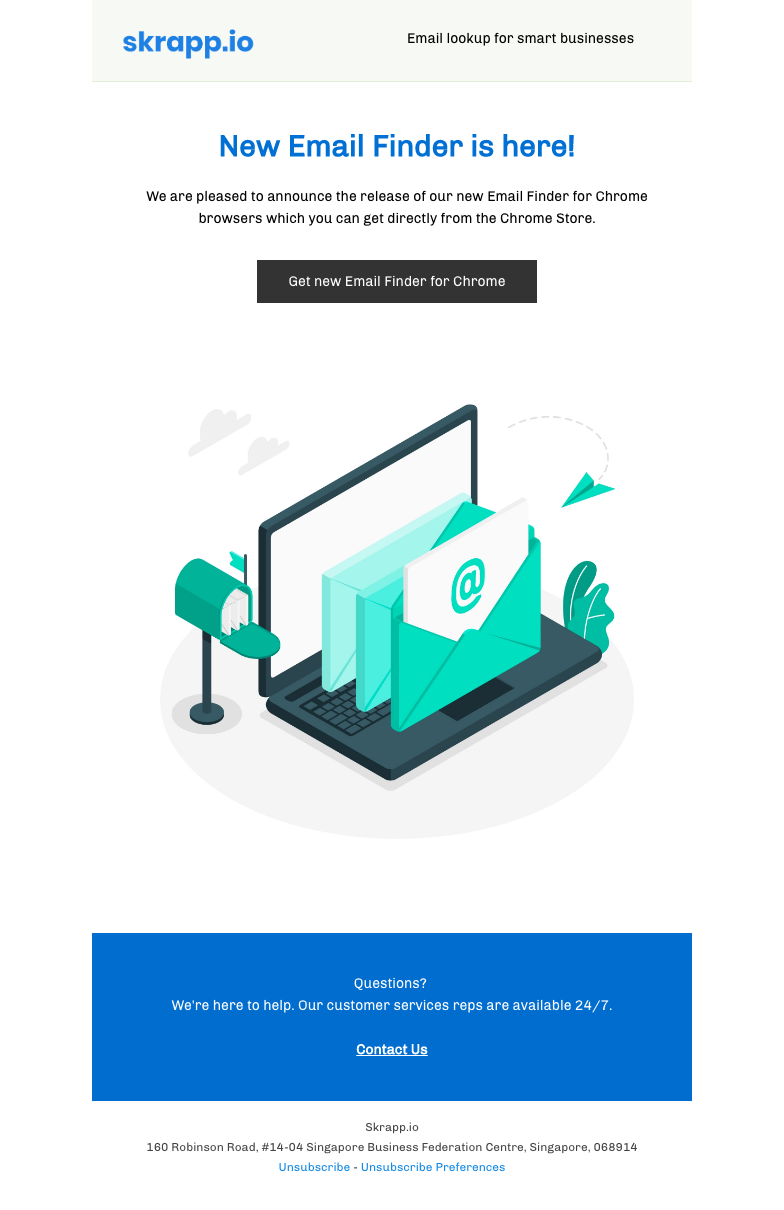
7. Reactivation Campaign for Inactive Customers
If you want to know how to re-engage lost customers, start with the people who already paid you once. They know your value.
Simple winback flow:
- Email 1: "We miss you" + what's new since they left
- Email 2: Loyalty offer - reduced rate, free month, upgraded features
- Email 3: "Need help getting started again? Here's a better onboarding flow"
Success metric: Aim for 10-15% reactivation rate on inactive customers. They're easier to bring back than cold leads because they've already experienced your product.
8. Personal Outreach from a Senior Rep / Founder
High-value prospects who went cold? Have someone senior reach out personally. Re-engage lost leads that matter by showing them they're worth the CEO's time.
Template:
- Subject: "Quick note from [Founder Name]"
- Body: "Hey [Name], saw we talked a few months back about [specific thing]. Wanted to check in personally - is this still on your radar? If timing's better now, I'd love to help make it happen."
Keep it to 2-3 lines max. Reference something from your previous conversation so they know it's not a template.
9. Triggered "Where Did You Stop?" Email (Behavioral Retargeting)
This is where things get smart. Use product data or website behavior to re-engage lost leads with super-relevant messages.
Examples:
- "Noticed you started the onboarding but didn't finish setup - stuck on something?"
- "You were looking at our [specific feature] page last week - want a quick demo of how it works?"
- "Saw you downloaded our pricing guide but didn't book a call - any questions I can answer?"
Why this converts: It's contextual. You're not guessing what they need - you know exactly where they dropped off.

10. Run a Win-Back Contest or Exclusive Event
Want to re-engage lost customers at scale? Give them a reason to come back that feels special.
Ideas:
- Exclusive webinar with limited seats (use social proof: "500 people registered in 48 hours").
- VIP roundtable with industry leaders.
- Limited product trial with new features they haven't seen.
Subject line: "You're invited: Exclusive [event/trial] for past customers only"
The key is making it feel exclusive, not mass-market.
11. Use AI to Personalize Subject Lines and Preview Text at Scale
If you're trying to re-engage lost leads in bulk, AI tools can help you personalize subject lines without writing 500 different emails.
How it works:
- Feed AI your lead data (company, role, previous objection).
- Generate subject line variants for A/B testing.
- Test at batch level to see what resonates.
Example outputs:
- Generic: "Following up on our conversation"
- AI-personalized: "Quick question about [Company's] Q4 hiring plans"
Pro tip: Always human-review AI output. It's good at scale but can sound robotic if you don't tweak it.

12. Re-Qualification Call + "No-Pressure" Offer to Restart Trial
Sometimes the best way to re-engage lost leads is just picking up the phone.
Simple SDR script:
- "Hey [Name], we talked [timeframe] ago about [solution]. Wondering if your situation's changed?"
- "What's different now vs then?" (listen for buying signals)
- "Would it help to restart a trial or do a fresh demo with no commitment?"
When to call vs email:
- Call: High-value prospects, enterprise deals, leads that engaged deeply before ghosting.
- Email: Lower ACV deals, large volume plays, leads that never had a sales conversation.
Short next step, no pressure. "Let's book 15 minutes next week" beats "let me send you a proposal."
You can pick a few of these that match where your leads dropped off, test them, and double down on what works. You don't need perfect execution - you need consistent follow-through.
Explore Further: Cold Calling vs Cold Emailing: What's Best for B2B Sales
Step-by-Step Email Sequences & Ready-to-Use Templates
Alright, enough theory. Here are 6 copy-paste templates that show you exactly how to reengage a prospect via email. Steal these, tweak them for your brand, and send them out.
📌 Template 1: B2B Sales Prospect Re-Engagement
When to use: Lead went cold after initial discovery call or demo
Subject line options:
- "Should I close your file?"
- "Quick question about [Company Name]"
- "Did we lose you?"
Body - Short version (Day 1):
Hey [Name],
We haven't connected since [last touchpoint] and I wanted to make sure I didn't drop the ball.
Are you still looking at solutions for [specific pain point], or did priorities shift?
If timing's not right, no problem - just let me know when to check back in.
[Your Name]
Body - Mid version (Day 4):
[Name],
Following up one more time. When we last talked, you mentioned [specific challenge they shared].
Since then, we helped [similar company] achieve [specific outcome in X timeframe]. Thought that might be relevant for [their company].
Worth a quick 10-minute conversation? Or should I follow up in a few months when things settle down?
[Your Name]
Body - Long version (Day 7 - Final touchpoint):
Hi [Name],
I'm closing out my follow-ups from [month], and wanted to reach out one last time.
I know [their pain point] was top of mind back in [timeframe]. If that's still a priority, I'd love to help. If not, I'll take you off my list - totally understand things change.
Just reply with:
- "Yes, let's talk" - and I'll send some times
- "Not now" - and I'll check back in 6 months
- "Not interested" - and I won't bother you again
Thanks for your time, [Your Name]
📌 Template 2: Ecommerce "We Miss You" Campaign
When to use: Customer hasn't purchased in 60-90 days
Subject line options:
- "We miss you (here's 15% off to come back)"
- "Still with us?"
- "[Name], this is for you"
Body - Short version:
Hey [Name],
Haven't seen you in a while!
We're offering 15% off your next order - just for coming back. Use code WELCOME15 at checkout.
Shop now: [link]
Expires in 5 days.
Cheers, [Your Brand]
Body - Mid version:
[Name],
It's been a few months since your last order and we wanted to check in.
Here's what's new since you last shopped:
- [New product line or feature]
- [Customer favorite item]
- [Something relevant to their past purchase]
To welcome you back, here's 15% off your next purchase. Code: WELCOME15
Valid until [date]: [Shop link]
Miss having you around, [Your Brand]
Body - Long version (with feedback ask):
Hi [Name],
We noticed you haven't shopped with us in a while, and we'd love to know why.
Was it:
- Price?
- Product selection?
- Something else?
Reply to this email (literally just hit reply) and let us know. Your feedback helps us get better.
And if you're willing to give us another shot, here's 20% off your next order: COMEBACK20
Valid for 7 days: [Shop link]
We'd love to earn your business back, [Your Name]
📌 Template 3: Free Trial Reactivation
When to use: User signed up for trial but didn't convert or finish onboarding
Subject line options:
- "Your [Product] trial is still available"
- "Need help getting started?"
- "We noticed you didn't finish setup"
Body - Short version:
Hey [Name],
Saw you signed up for [Product] but didn't get a chance to finish the setup.
Can I help? Most people get stuck on [common friction point].
Want to hop on a quick 10-minute call and I'll walk you through it?
[Book time link]
[Your Name]
Body - Mid version:
[Name],
You're so close! You signed up for [Product] but only got through [step they completed].
Here's what you're missing:
- [Key feature 1]
- [Key feature 2]
- [Key benefit they'd unlock]
I can get you up and running in under 15 minutes. Want me to send a quick video walkthrough, or should we jump on a call?
Just reply and let me know.
[Your Name]
Body - Long version (with extended trial offer):
Hi [Name],
You started your [Product] trial [X days] ago but we noticed you didn't get to explore [key feature].
That's our most popular feature - it's how [Company X] saved [specific outcome].
Here's what I want to do:
I'll extend your trial for another 14 days (no charge) AND set up a personalized walkthrough so you can see exactly how [Product] fits your workflow.
Sound good? Pick a time here: [Calendar link]
Or if now's not the right time, just let me know and I'll check back in a few months.
[Your Name]
📌 Template 4: Feedback Request (Reopens Conversation)
When to use: Lead went dark after proposal or pricing discussion
Subject line options:
- "Quick question for you"
- "What stopped you?"
- "One question about [Company]"
Body - Short version:
[Name],
Quick question: What made you decide not to move forward with [Product/Service]?
Just trying to understand if we missed something or if timing wasn't right.
Appreciate your honesty, [Your Name]
Body - Mid version:
Hey [Name],
We put together that proposal back in [month], but never heard back from you.
Totally fine if you went another direction - but I'd love to know what didn't work for you. Was it:
- Pricing?
- Features we were missing?
- Just not the right time?
Your feedback helps us get better. And if anything's changed on your end, I'm here.
[Your Name]
Body - Long version (with survey link):
Hi [Name],
We talked about [solution] for [their pain point] a few months back, but you went quiet on us.
I'm reaching out because we genuinely want to know what went wrong. Not trying to re-pitch you - just looking for honest feedback.
Would you mind answering 2 quick questions? Takes 30 seconds: [Survey link]
- Why didn't you move forward?
- What would've made you say yes?
And hey, if your situation's changed and you want to revisit this, let me know. No pressure either way.
Thanks for your time, [Your Name]
📌 Template 5: Product Update / New Feature Announcement
When to use: Lead bounced because of missing functionality
Subject line options:
- "We built the thing you asked for"
- "New: [Feature] is live"
- "Remember when you said we needed [X]?"
Body - Short version:
[Name],
Quick update: We just launched [new feature] - the exact thing you mentioned when we last talked.
Want a 10-minute walkthrough?
[Book time link]
[Your Name]
Body - Mid version:
Hey [Name],
Remember when you said you couldn't move forward because we didn't have [specific feature]?
Good news: We built it.
[Feature name] is now live, and it does exactly what you needed - [brief benefit description].
Here's what [similar customer] is seeing with it: [specific outcome].
Want to see it in action? I can show you in 15 minutes.
[Your Name]
Body - Long version:
Hi [Name],
When we talked back in [month], you mentioned [Product] didn't have [feature] - and that was a dealbreaker.
I wanted to let you know we just released it last week.
Here's what's new:
- [Feature 1 + what it does]
- [Feature 2 + what it does]
- [How it solves their specific pain point]
We've already had [X customers] start using it with [impressive early result].
If you're open to it, I'd love to show you a quick demo. No long sales pitch - just 10 minutes to see if this changes the equation for you.
Available next week? Grab a time: [Calendar link]
Or if now's still not right, no worries - just wanted to keep you in the loop.
[Your Name]
📌 Template 6: Founder/Executive Personal Outreach
When to use: High-value prospect or strategic account went cold
Subject line options:
- "Quick note from [Founder Name]"
- "[Name] - checking in personally"
- "Wanted to reach out directly"
Body - Short version:
[Name],
[Founder name] here from [Company].
Saw that you and [sales rep] talked a few months back about [specific thing]. Wanted to check in personally - is this still a priority?
If yes, I'd love to help move it forward. If not, totally understand.
[Founder Name] Founder, [Company]
Body - Mid version:
Hey [Name],
I'm reaching out directly because I saw you were looking at [solution] for [their challenge].
We've worked with companies like [similar company] on exactly this problem, and I think we could help [Their Company] see [specific outcome] pretty quickly.
If you're still working on this, I'd be happy to personally walk you through how we'd approach it.
Worth 15 minutes?
[Founder Name] [Title], [Company]
Body - Long version:
Hi [Name],
[Founder name] here. I don't usually reach out directly, but I saw you talked with [sales rep] about [specific initiative] back in [month].
I wanted to check in personally because:
- [Specific reason why their use case matters or is interesting]
- We just wrapped up something similar with [relevant customer] and got [specific result]
- I think we could help [Their Company] avoid [pain point they mentioned]
If timing's better now, let's talk. I'll personally make sure we get this right for you.
If not, I totally get it - just wanted to reach out while it was on my mind.
Here's my calendar if you want to chat: [Link]
Best, [Founder Name] [Title], [Company] [Direct phone/email]
Pro tip: Test subject lines and body lengths for your audience. B2B usually responds better to shorter emails. Ecommerce can go longer if you're including product highlights. Start with the short versions and only go longer if you're not getting responses.
Best Subject Lines & Preview Text That Win Opens (Quick Swipe File)
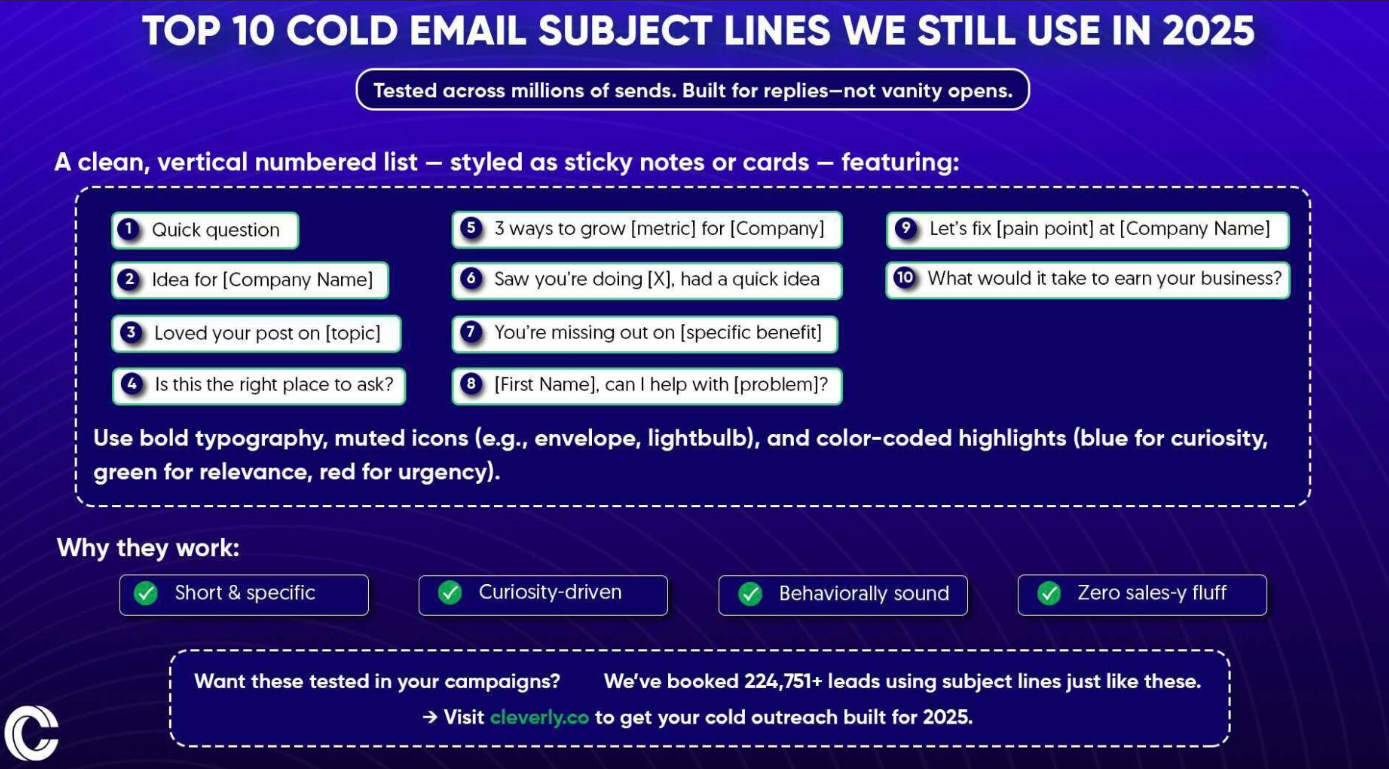
Your email content doesn't matter if nobody opens it. Here are 20+ tested subject lines that actually get clicks when you're trying to re-engage lost leads. We've grouped them by intent so you can grab what fits your situation.
"We Miss You" / Check-In Style (Soft Touch)
These work when you want to reconnect without being pushy:
- "Did we lose you?"
- "Should I close your file?"
- "Haven't heard from you in a while"
- "Quick question, [Name]"
- "[Name], are you still there?"
- "Checking in (no pressure)"
- "Just wanted to see if you're okay"
Preview text ideas:
- "Making sure we didn't drop the ball on our end"
- "Wanted to check if timing's better now"
- "No worries if things changed - just curious"
Offer / Incentive Style (Value-Driven)
Use these when you're leading with a discount or exclusive deal:
- "We miss you (here's 15% off to come back)"
- "Exclusive offer for past customers"
- "Your [X]% discount is waiting"
- "[Name], this is just for you"
- "Come back? We'll make it worth it"
- "Last chance: [offer] expires [date]"
Preview text ideas:
- "Use code WELCOME15 - valid for 7 days"
- "Because we want you back, here's something special"
- "Limited time offer for you specifically"
Pro tip on discounts in subject lines: Only mention the discount percentage if it's 20% or higher. Smaller discounts (10-15%) often perform better when you hint at value in the subject line but reveal the number in the preview text or body. "We want you back" beats "Here's 10% off" in most tests.
Product Update / New Feature Style (Curiosity + Value)
These work when something's actually changed since they last engaged:
- "We built the thing you asked for"
- "New: [Feature name] is live"
- "You're gonna want to see this, [Name]"
- "We fixed the [pain point] issue"
- "Major update to [Product]"
- "Remember when you said we needed [X]?"
- "This changes everything for [their industry]"
Preview text ideas:
- "The feature you mentioned is finally here"
- "Just launched - thought of you immediately"
- "Based on your feedback, we built [X]"
Feedback Request Style (Reopens Dialogue)
Use these to get intel and restart conversations:
- "What stopped you?"
- "Quick question for you"
- "Can I ask you something?"
- "One question about [Company Name]"
- "Mind if I ask what went wrong?"
- "30-second favor?"
- "Help us get better, [Name]"
Preview text ideas:
- "Just trying to understand if we missed something"
- "Your honest feedback would really help"
- "Not trying to sell you - just want to learn"
Urgency / FOMO Style (Use Sparingly)
These create urgency but can backfire if overused:
- "Your trial expires tomorrow"
- "Last call, [Name]"
- "We're closing inactive accounts [date]"
- "[X] spots left for [event/offer]"
- "Final reminder: [benefit] ends soon"
- "Don't lose access to [feature]"
Preview text ideas:
- "After [date], this offer disappears"
- "We'll have to remove you from the list"
- "This is the last you'll hear from us"
Warning: Only use urgency if it's real. Fake deadlines destroy trust when people catch on (and they will).
Personal / Executive Outreach Style (High-Touch)
For high-value prospects who need the VIP treatment:
- "Quick note from [Founder Name]"
- "[Name] - checking in personally"
- "Wanted to reach out directly"
- "Personal message for you, [Name]"
- "[Founder/CEO] here - 2 minutes?"
- "I don't usually do this, but..."
Preview text ideas:
- "Saw you talked with [rep] about [topic] - wanted to follow up myself"
- "Taking a personal interest in [Their Company]'s situation"
- "I think we can help - let me show you how"
Curiosity / Pattern Interrupt Style (Stand Out)
These break through inbox clutter with curiosity:
- "Awkward question..."
- "Permission to be honest?"
- "This might sound weird, but..."
- "You're one of 47 people I'm sending this to"
- "I'm confused about something"
- "Can we start over?"
Preview text ideas:
- "I think we got off on the wrong foot"
- "I might have made a mistake with [Company]"
- "Something doesn't add up and I need your help"
When to use these: Only if your brand voice allows for it. They work great for startups and B2B sales, but might feel off-brand for enterprise or conservative industries.
Segmentation & Timing — Who to Target and When
Sending the same "we miss you" email to everyone on your lost leads list is like using a sledgehammer when you need a scalpel.
If you want to stop losing leads you could've saved, you need to segment smart and time your outreach right.
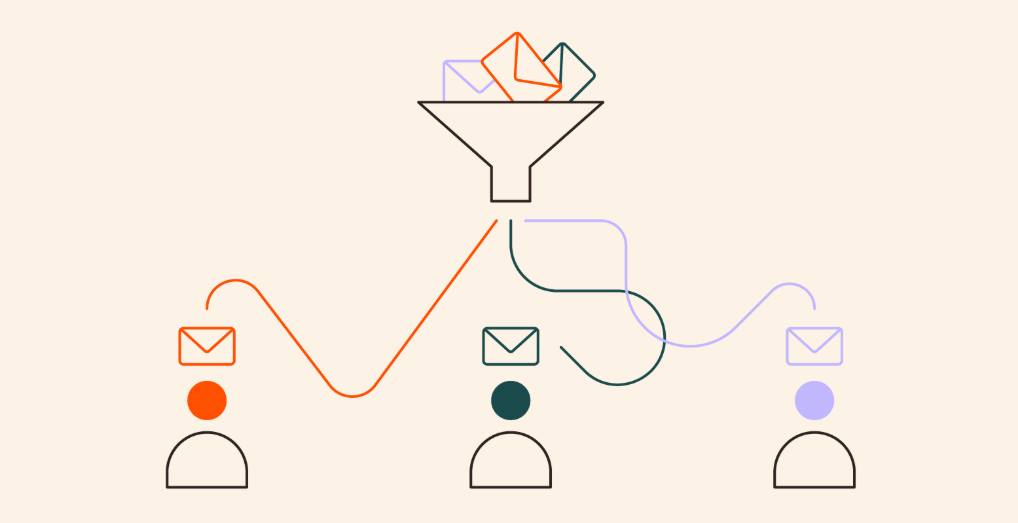
How to Segment Your Lost Leads
Not all cold leads are created equal. Here's how to break them down:
By Recency (How Long Since Last Contact)
- 0-30 days: Still warm - they probably got busy or distracted
- 31-90 days: Cooling off - need a gentle nudge with fresh value
- 91-180 days: Cold - requires stronger hook or new angle
- 180+ days: Frozen - treat these like brand new prospects
Why this matters: A lead who went silent 3 weeks ago needs a completely different message than someone who ghosted you 8 months ago.
By Last Activity (What They Did Before Disappearing)
- Opened emails but never clicked → Messaging didn't resonate
- Clicked links but didn't book call → Timing or trust issue
- Booked demo but no-showed → Low intent or got busy
- Attended demo but didn't respond after → Evaluating other options or internal blocker
- Reviewed proposal but went dark → Price, decision-maker, or budget issue
Pro tip: Your CRM should track this. If it doesn't, you're flying blind and losing leads you could diagnose and save.
By Deal Stage (How Close They Got)
- Early stage (awareness): Downloaded content, opened a few emails - need education
- Mid stage (consideration): Had discovery call or demo - need proof/social proof
- Late stage (decision): Received proposal or pricing - need objection handling or incentive
The closer they got to buying, the more direct your re-engagement can be.
By Industry or Vertical
Group leads by industry so you can reference relevant case studies and use cases:
- SaaS companies respond to ROI metrics and integration stories
- Agencies care about time savings and client results
- Ecommerce wants conversion rate improvements
By "Demo Hotness" (Engagement Level)
Rate how engaged they were before ghosting:
- Hot: Multiple conversations, strong fit, clear need - re-engage fast
- Warm: Some engagement, unclear blocker - re-engage with value
- Cold: Minimal engagement, never really interested - long nurture or let go
By Objection Type
If they told you why they didn't move forward, segment by objection:
- Price too high: Offer incentive or ROI proof.
- Missing features: Wait until you build it, then re-engage with update.
- Bad timing: Check in when their buying season hits (budget cycles, Q4, etc.)
- Went with competitor: Re-engage in 6-12 months when contract renewal comes up
Match your re-engagement message to their specific objection and you'll stop losing leads to fixable problems.
Timing Rules: When to Reach Out
Timing is everything. Reach out too soon and you're annoying. Too late and they've forgotten you or bought from someone else.
Hot Leads (High Intent, Recent Engagement): 2-4 Weeks
These are people who:
- Had a demo in the last month
- Reviewed your proposal recently
- Were actively comparing vendors
Why re-engage fast: They're still in buying mode. Wait too long and they'll sign with a competitor or their budget will disappear.
Warm Leads (Some Interest, Moderate Engagement): 1-3 Months
These are people who:
- Had a discovery call but didn't move to demo
- Engaged with content but never booked a meeting
- Showed interest but timing wasn't right
Why wait longer: They need time to either realize their problem got worse or for their situation to change.
Cold Leads (Minimal Engagement): 3-6 Months
These are people who:
- Opened a few emails but never engaged
- Downloaded one piece of content and disappeared
- Were never a strong fit to begin with
Why wait even longer: They weren't ready. Give them time to hit the pain point that makes your solution relevant.
Frozen Leads (6+ Months, Zero Engagement): Yearly Check-In or Remove
If someone hasn't opened an email in 6+ months, they're either:
- Using a dead email address
- Not interested at all
- So buried in emails they'll never see yours
What to do: Send one last breakup email ("Should I take you off the list?") or move them to an annual newsletter. Otherwise, you're hurting your deliverability by emailing people who never engage.
Measurement & Benchmarks — What Success Looks Like
You can't improve what you don't measure. Here's how to track whether your efforts to re-engage lost leads are actually working - and what numbers you should be aiming for.

Open Rate
This tells you if your subject lines are working and if people are actually seeing your emails.
- What to track: Percentage of recipients who opened your re-engagement email
- Why it matters: If nobody's opening, your subject lines suck or your sender reputation is toast. Fix this first before worrying about anything else.
Reply Rate
The percentage of people who respond to your email - even if it's just "not interested."
- What to track: (Number of replies / Number of emails sent) × 100
- Why it matters: Replies signal engagement. Even a "no thanks" is better than silence because it tells you the message resonated enough to warrant a response.
Reactivation Rate (MQL/SQL Conversion)
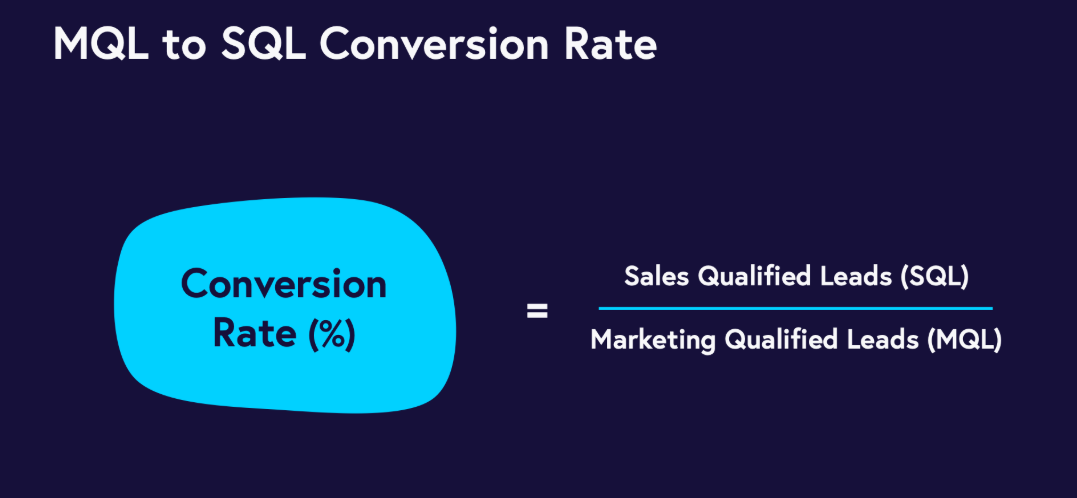
This is the big one. How many lost leads actually move back into your pipeline?
What to track:
- MQL reactivation: Lead re-engages and qualifies as marketing-qualified (downloads content, attends webinar, books call).
- SQL reactivation: Lead moves to sales-qualified (demo booked, proposal requested, deal reopened)
Formula: (Number of reactivated leads / Total leads contacted) × 100
Why it matters: Opens and replies are vanity metrics. Reactivation rate tells you if you're actually recovering revenue.
Pipeline Value Recovered
The total dollar value of deals that came back to life.
What to track: Sum of deal values for all reactivated opportunities.
Example: You re-engaged 100 lost leads. 5 came back into sales conversations. 2 closed for $50K each. Pipeline value recovered = $100K.
Why it matters: This is how you prove ROI to your boss. "We recovered $100K in pipeline by spending 10 hours on re-engagement emails" is a winning argument.
Cost to Re-Engage vs. CAC (Customer Acquisition Cost)
Compare what it costs to bring back a lost lead versus acquiring a brand new one.
What to track:
- Re-engagement cost: Time spent (hours × hourly rate) + tools + any incentive/discount offered.
- CAC: Your average cost to acquire a new customer (marketing + sales costs / new customers)
Why it matters: If it costs you $500 to acquire a new customer but only $50 to reactivate a lost lead, you should be spending way more time on re-engagement.
Benchmarks: What "Good" Looks Like
These numbers vary by industry, list quality, and how cold your leads are - but here's what to aim for:
Open Rates for Re-Engagement Campaigns
- Good: 15-25%
- Average: 10-15%
- Poor: Under 10%
Reply Rates
- Good: 5-10%
- Average: 2-5%
- Poor: Under 2%
Reactivation Rate (MQL/SQL)
- Good: 5-15% of contacted leads re-engage
- Average: 2-5%
- Poor: Under 2%
Win-Back Rate (Inactive Customers)
- Good: 10-20% come back
- Average: 5-10%
- Poor: Under 5%
Pipeline Recovery Benchmarks
- High-touch B2B sales (enterprise): Expect to recover 10-20% of lost pipeline value
- Mid-market B2B: 5-15% recovery
- Transactional/SMB: 3-10% recovery
Tools & Integrations That Make Re-Engagement Scalable
You can manually send re-engagement emails one by one, or you can use the right tools and re-engage lost leads at scale without losing the personal touch. Here's what actually works.
Email Platforms (ESPs)
These are your workhorses for building and sending re-engagement campaigns.
Klaviyo

- Best for: Ecommerce and B2C companies
- Why it works: Built-in segmentation by purchase behavior, browsing history, and engagement level. Easy to set up "win-back" flows for customers who haven't purchased in X days.
- Key feature: Predictive analytics that tells you which customers are most likely to churn - so you can re-engage them before they go cold.
ActiveCampaign
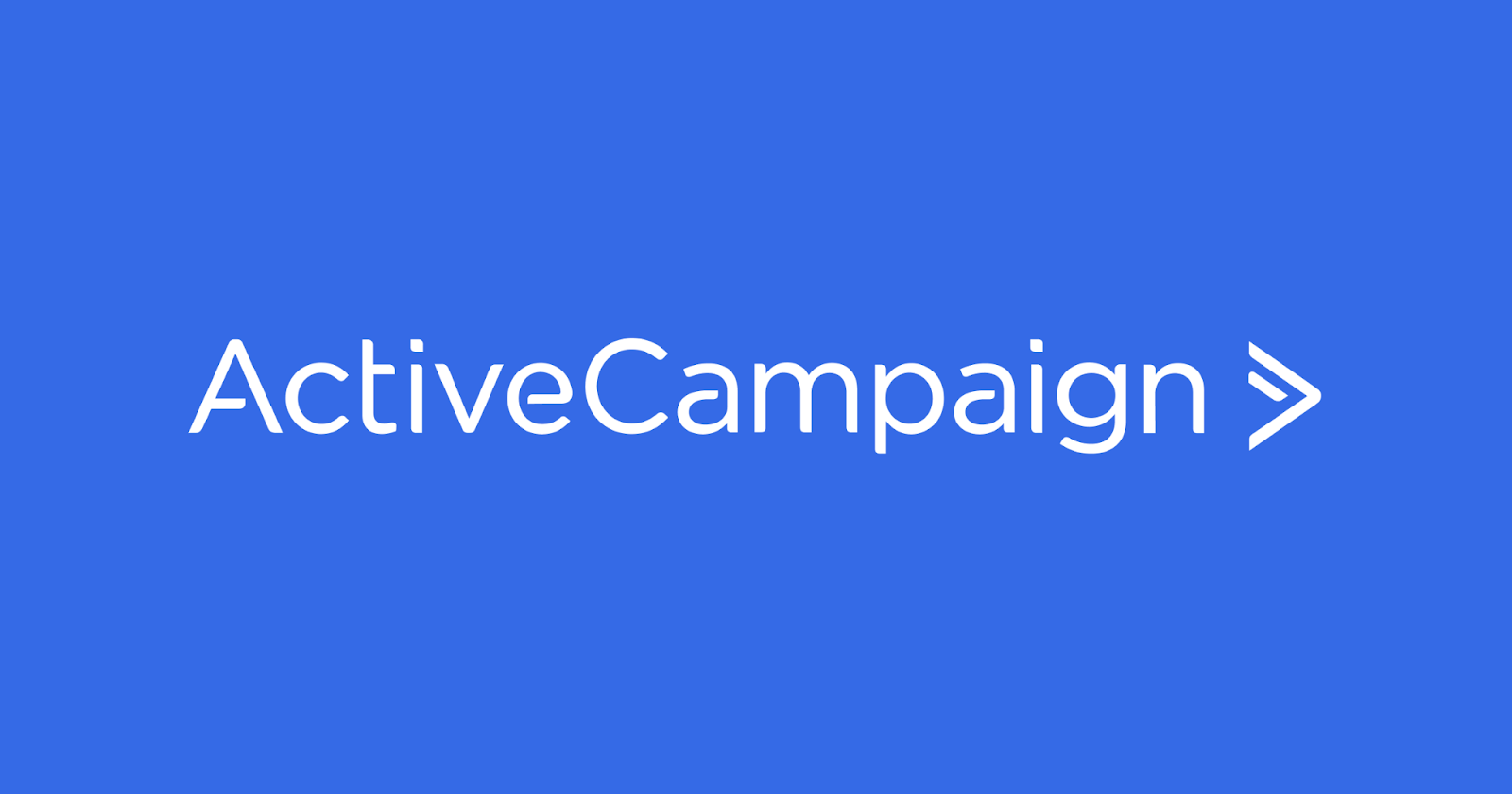
- Best for: Small to mid-size B2B companies and service businesses.
- Why it works: Strong automation builder with conditional logic. You can trigger re-engagement sequences based on lead score drops, inactivity, or specific behaviors.
- Key feature: CRM built-in, so you can track deals and automate follow-ups without switching tools.
Mailchimp

- Best for: Startups and small businesses on a budget
- Why it works: Simple to use, decent segmentation, free tier available.
- Limitation: Automation gets clunky at scale. If you're sending complex multi-touch sequences, you'll outgrow it fast.
Deliverability Tools (Make Sure Your Emails Actually Land)
All the great copy in the world won't help if your emails hit spam. These tools keep you out of the junk folder.
Email Warmup Tools (Mailwarm, Lemwarm, Warmbox)
- What they do: Gradually increase your sending volume and engagement rates by automatically sending emails between warmed-up accounts.
- When to use: If you're spinning up a new domain, ramping up cold email volume, or recovering from deliverability issues.
- Pro tip: Warm up for 2-4 weeks before launching major re-engagement campaigns.
NeverBounce / ZeroBounce
- What they do: Verify email addresses before you send to remove bounces, spam traps, and inactive accounts.
- Why it matters: Sending to bad emails tanks your sender reputation. Clean your list before every re-engagement campaign.
- Cost: Usually $0.008-0.01 per email verified. Worth every penny.
CRM & Sequence Tools
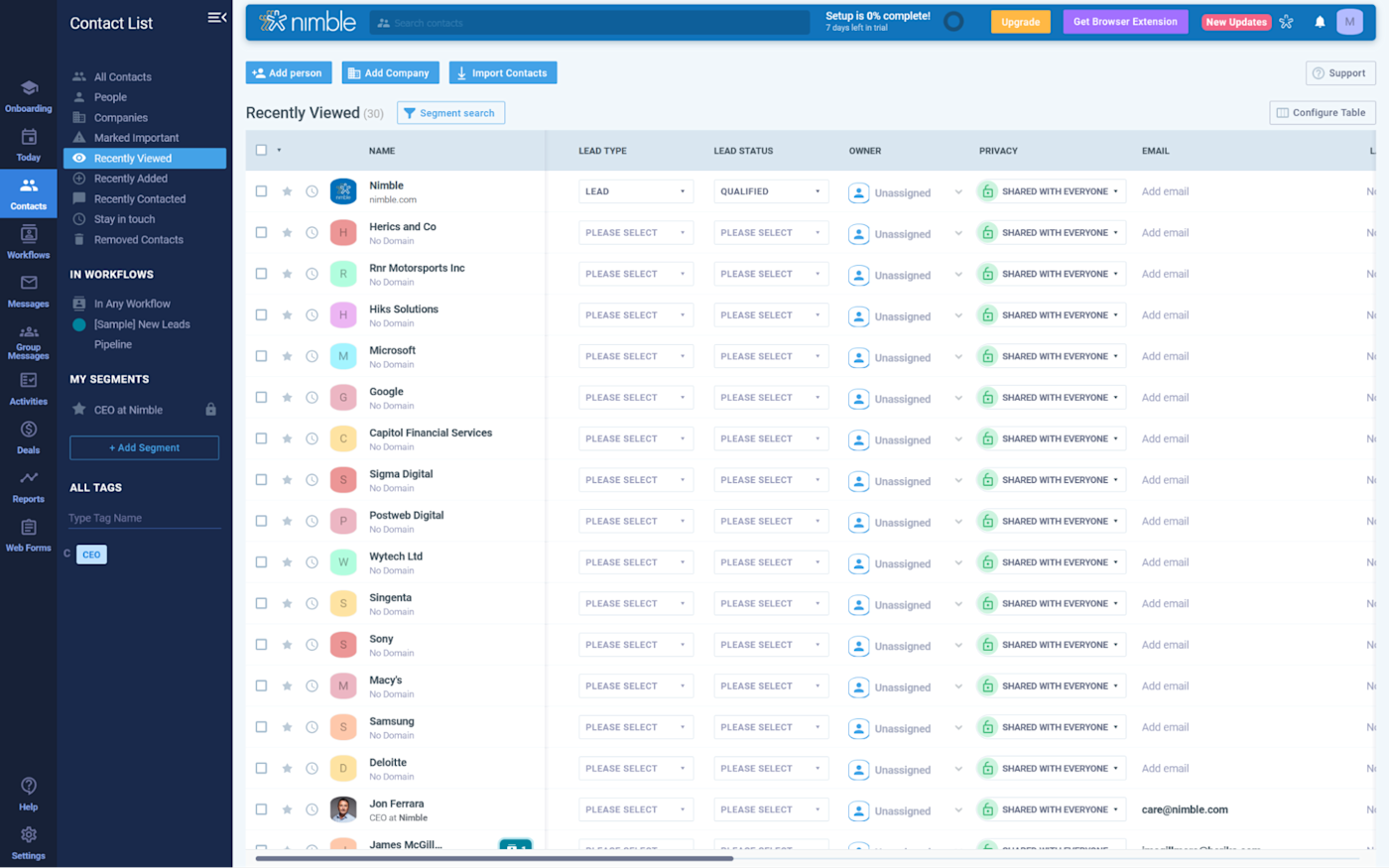
These help you manage re-engagement workflows and track leads as they move back into your pipeline.
HubSpot
- Best for: B2B companies that want marketing + sales in one platform.
- Why it works: Build sequences with email, tasks, and LinkedIn touches. Track which leads re-engage and automatically move them into new deal stages.
- Key feature: Lead scoring that drops when someone goes inactive - perfect trigger for re-engagement workflows.
Salesforce
- Best for: Enterprise teams with complex sales processes
- Why it works: Unlimited customization. You can build re-engagement workflows that trigger based on literally any data point in your system.
- Limitation: Requires serious setup. Not plug-and-play like HubSpot.
Pipedrive
- Best for: Small sales teams that want simple deal tracking
- Why it works: Clean interface, good email integration, affordable. Easy to set up automated email sequences when deals go stale.
- Key feature: Visual pipeline makes it obvious which deals have been sitting too long.
Common Pitfalls in Re-engaging Lost Leads & How to Avoid Them
Even with great templates and tools, you can still screw up re-engagement and keep losing leads you could've saved. Here are the biggest mistakes we see - and how to fix them.
Mistake #1: Leading With Aggressive Discounts
Discounts attract price shoppers, not loyal customers. If someone didn't buy because they didn't see your value, slashing your price won't change that - it just confirms you're desperate.
Worse, you're training future leads to ignore you until you offer a discount. Your margins shrink and your customer quality drops.
The fix:
- Test value first: Send case studies, ROI proof, or product updates before offering discounts.
- Use discounts strategically: Only for leads who went cold due to budget concerns, not value questions.
- Keep discounts small: 10-15% is usually enough. If you need 50% off to close deals, you have a positioning problem.
Good approach: "We helped [similar company] achieve [specific result]. Want to see how we'd approach it for you?" beats "Here's 30% off" every time.
Mistake #2: Skipping the Diagnosis
A lead who ghosted after seeing your pricing needs a different message than someone who couldn't get buy-in from their boss. Treating them the same wastes everyone's time.
The fix:
Before you send anything, audit your lost leads:
- Where did they drop off? (Demo? Proposal? First email?)
- What objections did they raise?
- How engaged were they before going cold?
Then segment your list and customize your approach for each group.
Example: Leads who went cold after pricing get an ROI calculator or payment plan option. Leads who never engaged get educational content, not a sales pitch.
Mistake #3: Over-Emailing (Burning What's Left)
Email fatigue is real. Bombard someone with messages and they'll either mark you as spam (tanking your deliverability for everyone) or tune you out completely.
The fix:
Stick to 3-6 touches max over 2-4 weeks. If they don't respond after 6 attempts, stop.
Critical rule: If someone doesn't open your first 3 emails, remove them from the sequence. They're either:
- Not using that email anymore
- Actively ignoring you
- Your emails are hitting spam
Continuing to email them hurts your sender reputation and causes you to keep losing leads you might reach through other channels.
Good approach:
- 3 emails over 2 weeks for warm leads
- 4-5 emails over 3-4 weeks for colder leads
- Stop immediately if no opens after 3 attempts
- Try a different channel (LinkedIn, phone) for high-value prospects
Mistake #4: Fake Personalization (Or None at All)
People can smell a mass email from a mile away. If your "personalization" is just a first name merge tag, you're not fooling anyone.
Example:
- Bad: "Hi John, just checking in about our software"
- Good: "John - saw you were looking at our integration with Salesforce back in March. We just released a new connector that cuts setup time in half. Worth a look?"
Mistake #5: Not Cleaning Your List First
Bounced emails, spam traps, and inactive addresses destroy your sender reputation. Once that tanks, even your engaged subscribers stop seeing your emails.
The fix:
Before every re-engagement campaign:
- Run your list through NeverBounce or ZeroBounce
- Remove hard bounces, spam traps, and catch-all emails
- Segment out people who haven't opened anything in 6+ months
Cost vs. benefit: Spending $50-100 to verify 5,000 emails is way cheaper than tanking your deliverability and losing access to your entire list.
Bonus: Clean lists get better open rates, which improves your sender reputation, which gets you better inbox placement. It's a virtuous cycle.
Mistake #6: No Testing = No Improvement
What worked 6 months ago might not work today. Audience preferences change. Inbox algorithms change. If you're not testing, you're guessing.
Start with small test cohorts:
- Take 200 cold leads and split them 50/50
- Test one variable (subject line, email length, offer vs. no offer)
- Send to the test group first
- Roll out the winner to the rest of your list
What to test:
- Subject line angles (curiosity vs. direct, offer vs. value)
- Email length (short vs. long)
- Send time (morning vs. afternoon, weekday vs. weekend)
- CTA type (reply vs. book call vs. click link)
Track everything: Open rates, reply rates, and reactivation rates. Build a playbook based on what YOUR audience responds to, not what some blog post said works.
Mistake #7: Treating High-Value Leads Like Everyone Else
High-value prospects expect (and deserve) human attention. Sending them a templated "we miss you" email feels lazy and impersonal.
For deals over your average ACV:
- Pull them out of automation
- Have a senior rep or founder reach out personally
- Reference specific details from past conversations
- Offer a custom demo or strategy session
Example: Instead of "Just checking in," try: "Hey Sarah - we talked last spring about expanding your SDR team. Saw on LinkedIn you just opened a new office in Austin. Curious if outbound is back on the table now that you're hiring. Want to grab 15 minutes?"
Rule of thumb: If the deal is worth more than 5x your average sale, it's worth manual outreach.
Quick Fixes Summary
Stop losing leads to these mistakes by:
✅ Test small first: Don't blast your entire list. Test on 100-200 leads, learn what works, then scale.
✅ Get feedback before assuming: Send a simple "What stopped you?" email before crafting complex re-engagement sequences. Let leads tell you what to fix.
✅ Use human outreach for high-value leads: Automate the small stuff, personalize the big stuff.
✅ Clean your list quarterly: Run email verification every 90 days minimum. Remove non-openers after 6 months.
✅ Stop at 3 unopened emails: Protect your deliverability. If they're not opening, stop emailing and try another channel.
✅ Diagnose before you treat: Understand why leads went cold before deciding how to re-engage them.
How Cleverly Helps Re-Engage Lost Leads
Here's the uncomfortable truth: 30-60% of your database is just sitting there. Cold. Ignored. Gathering digital dust.
The good news? Reactivating them is way easier (and cheaper) than chasing brand-new prospects.
The bad news? Most teams don't have the time, system, or deliverability setup to do it right.
That's where we come in.

What We Do Differently
As a lead generation agency, we've spent years perfecting the art of waking up dead leads. Here's how we approach it:
- Verified, clean prospect lists
- Personalized, multi-channel sequences
- Deliverability dialed in
- Focused reactivation sprints

Real Results
Clients typically see a 2-3x increase in reply rates compared to their internal baseline when we run targeted reactivation sprints.
Why? Because we're combining clean data, sharp copy, and multi-channel consistency - not just hoping someone opens email #7.
At Cleverly, we've helped 10,000+ clients generate leads with companies like Amazon, Google, Uber, PayPal, Slack, and Spotify.
That's resulted in $312 million in pipeline revenue and $51.2 million in closed revenue. A big chunk of that? Recovered from leads that looked dead.
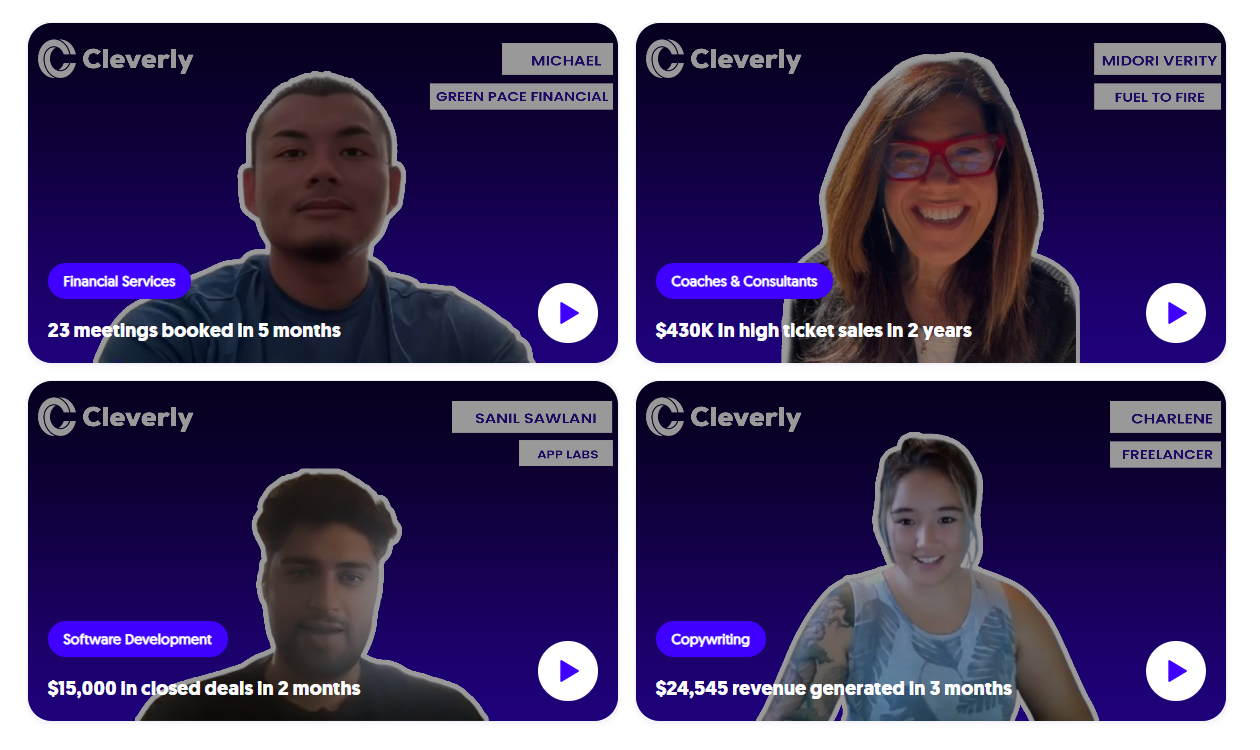
Check out more of our client reviews
Let's Run a Reactivation Sprint for You
No long contracts. No fluff. Just focused execution on the leads you already paid to acquire.
Ready to wake up your database? Let's talk. We'll show you what's possible when you stop losing leads and start winning them back.

Conclusion
Figure out why your leads went cold (diagnosis first, always), pick 3-4 strategies from this list that match your audience, test them on small groups, measure what works, then scale.
The key? Personalize and add human touch for your high-value prospects - they're worth the effort. For everything else, automate smart so you can re-engage lost leads at scale without burning out your team.
And if you'd rather hand this off to people who do it all day? We're here. Cleverly runs targeted reactivation sprints that turn dormant databases into pipeline. Clean lists, sharp copy, multi-channel execution, real results.
Want us to audit your lost leads and show you what's recoverable? Let's talk.



